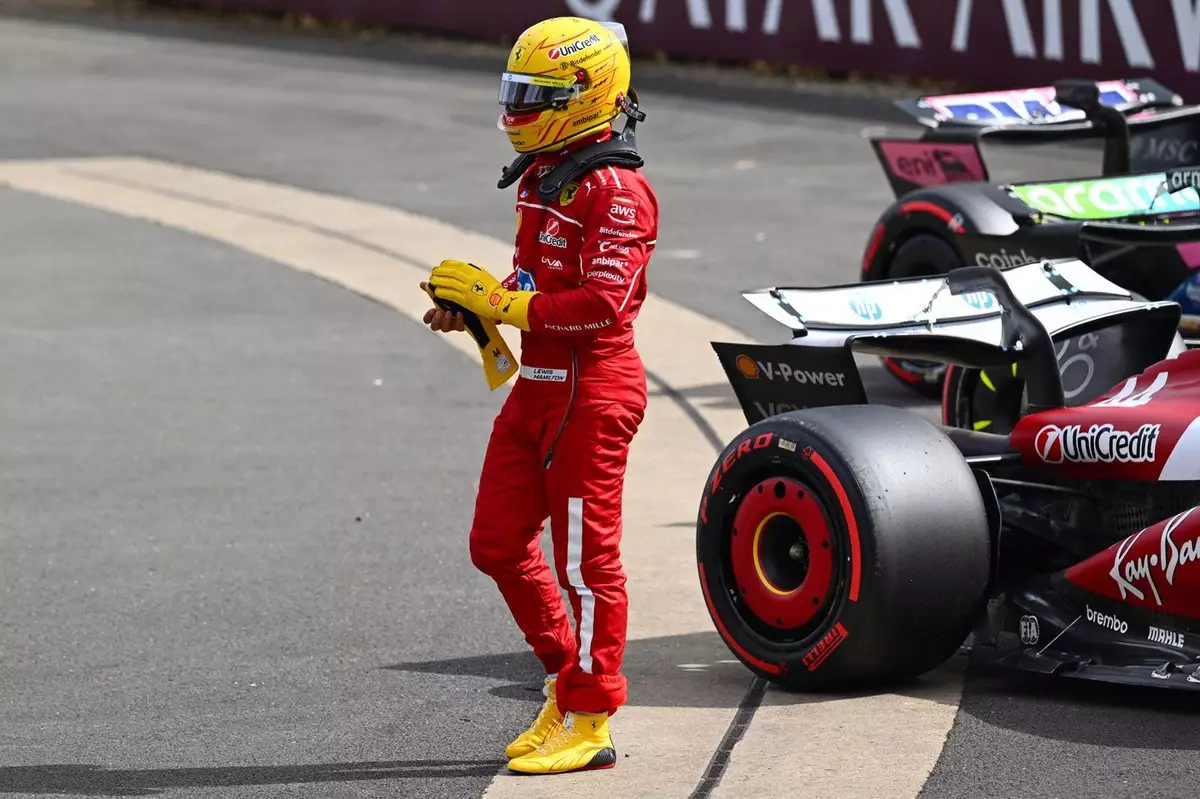In the world of Formula 1, every split second counts, and the margins for error are razor-thin. For Lewis Hamilton, the recent qualifying session at Silverstone underscored this reality profoundly. Despite staging an impressive performance that showcased both skill and determination, a small mistake denied him the coveted front-row start. This event is more than a mere point on the grid; it epitomizes the relentless pursuit of excellence that has defined Hamilton’s career. While he expressed satisfaction with his performance, he did not shy away from acknowledging the crucial error—the understeer at Turn 16 that cost him precious milliseconds. Such moments exemplify the fine balance drivers maintain between mastery and vulnerability, revealing that even seasoned champions are subject to the whims of technicalities and fleeting lapses.
In the grand tapestry of Hamilton’s journey, this semi-setback is a testament to resilience. Yes, he started fifth—a position still respectable and promising under racing conditions—but the disappointment of missing out on pole is palpable. It raises a fundamental question about aspiration versus reality: how does a driver subvert the frustration of errors to fuel future success? For Hamilton, it’s about persistent adaptation. The acknowledgement of progress, in this case with upgraded machinery and improved teamwork, acts as a crucial psychological anchor. It signals that setbacks are merely catalysts for refinement rather than definitive defeats.
Beyond Speed: The Significance of Teamwork and Personal Growth
What stands out in Hamilton’s recent reflections is his focus on relational and organizational development within the team. His transition from Mercedes to Ferrari carried with it inherent challenges, especially considering the media’s focus on his strained relationship with former race engineers. Interestingly, Hamilton openly attributes recent progress to better communication and rapport with his new engineer, Riccardo Adami. This is a nuanced aspect often overlooked in high-stakes racing: the mental and emotional synergy between driver and team personnel can significantly influence performance.
This shift in dynamics mirrors Hamilton’s broader attitude towards growth—recognizing that technical prowess alone is insufficient without the right mindset and team chemistry. His comments suggest a maturity that transcends raw speed; it involves embracing change, constantly learning, and honing interpersonal connections. This ability to adapt is essential not only in racing but also in life’s broader landscape. It underscores that success is a multifaceted pursuit—requiring both mechanical precision and emotional intelligence. Hamilton’s recent trajectory implies that when individuals actively foster shared understanding, they forge an environment primed for breakthroughs, even when faced with inevitable setbacks.
The Spirit of a Champion in the Face of Adversity
Hamilton’s candid acknowledgment of the difficulty in reclaiming last year’s home victory resonates deeply. His 2022 British GP triumph was an emotional high point, symbolizing more than just a race win—the culmination of years of perseverance and passion. Yet, this year, the challenge appears steeper. The competition from Red Bull and McLaren has intensified, making the goal of pole position and victory more daunting. Still, Hamilton’s optimistic tone and unwavering determination reveal a profound understanding: true champions are not defined solely by their immediate results but by their attitude towards adversity.
The context of Hamilton racing in a Ferrari, a team with its own storied history and passionate fan base, adds an intriguing layer to his narrative. Not merely a driver chasing victories, he seems driven by a larger purpose—embracing a new chapter, inspiring fans, and pushing personal boundaries. Through this lens, the upcoming race isn’t just about winning; it’s a statement about resilience, adaptability, and the relentless pursuit of greatness. His sentiment that “when there’s a will, there’s a way” captures this ethos perfectly. With the support of his family and fans, Hamilton channels their energy and hopes into every lap more fervently than ever, embodying the indomitable spirit that keeps racing alive within him.
Ultimately, this narrative serves as a reminder that setbacks, no matter how discouraging, are integral to the journey of a true champion. It’s not the absence of errors that defines greatness, but the capacity to learn, grow, and keep pushing forward—an enduring testament to Hamilton’s unbreakable drive for excellence.

